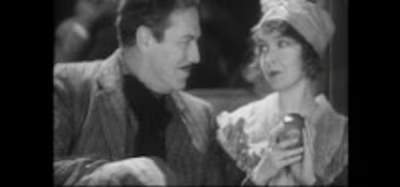The Wind

Brief Synopsis
Cast & Crew
Victor Seastrom
Lillian Gish
Lars Hanson
Montagu Love
Dorothy Cumming
Edward Earle
Film Details
Technical Specs

Synopsis
Letty, a girl from Virginia, trainbound for her cousin's ranch in the western prairies, meets Roddy, who hints at a marriage proposal. At the ranch, Cora's children and husband become too fond of Letty, and she is forced to leave. With nowhere to go, she decides to accept Roddy's implied invitation to become his wife. When she discovers him already married, she hastily marries Lige, a roughhewn son of the soil at whom she had previously scoffed. While Lige is away for a round-up of wild horses during a particularly fierce windstorm, Roddy forces his way into Lige's home and stays the night with Letty, urging her to go with him in the morning. She refuses, shoots him when he becomes insistent, laboriously drags his body outside, and buries it in the shifting sand. Letty spends a day of terror that approaches madness; but Lige returns, and Letty decides that she no longer wishes to return to Virginia--they will face the wind together.

Director

Victor Seastrom
Cast

Lillian Gish
Lars Hanson

Montagu Love

Dorothy Cumming
Edward Earle
William Orlamond
Laon Ramon
Carmencita Johnson
Billy Kent Schaefer
Crew

Photo Collections
Videos
Movie Clip





Film Details
Technical Specs

Articles
The Wind - The Wind
One could argue that the true protagonist of The Wind is the wind itself, a mournful sandstorm that almost drives Gish's character insane. She plays Letty Mason, a lonely Virginia woman who travels by train to the Texas ranch of her cousin, Cora (Dorothy Cumming.) While on the train, Letty strikes up a flirtation with Roddy (Montagu Love), a Fort Worth man who implies that he might want to marry her. Later, at the ranch, Cora grows jealous of Letty when she develops a friendship with her husband (Edward Earle). She accuses Letty of trying to steal him away from her, and kicks her out of the house.
When Letty discovers, much to her dismay, that her train-ride suitor, Roddy, already has a wife, she marries an awkward cowboy named Lige (Lars Hanson.) Lige understands that Letty doesn't love him, but he still wants to take care of her until he can earn enough money to send her back to Virginia. It would be ruining things to say what happens next, but Letty's story is an unforgettably harrowing tale of betrayal, murder, and, finally, redemption. The wind blows remorselessly throughout, serving as a reminder of her tortured psychological state. At one point, it literally (and, in filmmaking terms, quite brilliantly) uncovers her darkest secret.
The Wind is no joyride, to say the least, and the original cut was even more depressing. It hued closely to Dorothy Scarborough's source novel, in which the wind wins, taking Letty with it. Though MGM's head of production, Irving Thalberg, had qualms about such a downer of a third act, it tested well, so he decided to let it stand. But the studio's powerful Eastern office decreed that the finale needed to be more upbeat, and a new one was shot.
Seastrom, who was one of the key figures in Swedish film in the 1920s, was so disheartened by the tampering, he moved back to his native country to resume his career. He had traveled to the United States to direct such hits as He Who Gets Slapped (1924), with Lon Chaney, and The Divine Woman (1928), with Great Garbo, but he was eventually just as successful as an actor. His performance in Ingmar Bergman's 1957 classic, Wild Strawberries as the dying old man is generally considered his greatest role.
Gish also had less-than-fond memories of The Wind. The Mojave Desert shoot was a nightmare in which 120 degree temperatures melted the film emulsion (this problem was ingeniously solved by freezing the footage, which was then defrosted and developed back in Culver City.) But Gish was victimized by more than mere heat. "Working on The Wind was one of my worst experiences in filmmaking," she once wrote. "Sand was blown at me by eight airplane propellers and sulphur pots were used to give the effect of a sandstorm. I was burned and in danger of having my eyes put out. My hair was burned by the hot sun and nearly ruined by the sulphur smoke and sand." She got over it, though, and had the longest career in movie history. Her last performance was in Alan Alda's 1986 comedy, Sweet Liberty, which came out an amazing 74 years after her debut performance!
Directed by: Victor Seastrom
Screenplay: Frances Marion, based on the novel by Dorothy Scarborough
Titles: John Colton
Cinematography: John Arnold
Editing: Conrad A. Nervig
Art Direction: Cedric Gibbons and Edward Withers
Principal Cast: Lillian Gish (Letty Mason), Lars Hanson (Lige), Montagu Love (Wirt Roddy), Dorothy Cumming (Cora), Edward Earle (Beverly), William Orlamond (Sourdough.)
BW-82m.
by Paul Tatara

The Wind - The Wind
Quotes
Trivia
The wind in the film was created by the propellers of eight aircraft stationed on location in the Mojave Desert.
This film was selected to the National Film Registry, Library of Congress, in 1993.
The film's artificially happy ending was insisted upon by the studio after test audiences balked at the original ending, where the insane Letty wanders into the desert, certain to die. This more appropriate ending reportedly still exists in Europe.
Notes
Originally, the film's ending followed the novel's: Letty, driven insane, wanders off into the desert. According to modern sources, studio officials required a happy ending, however, before the film's release.














